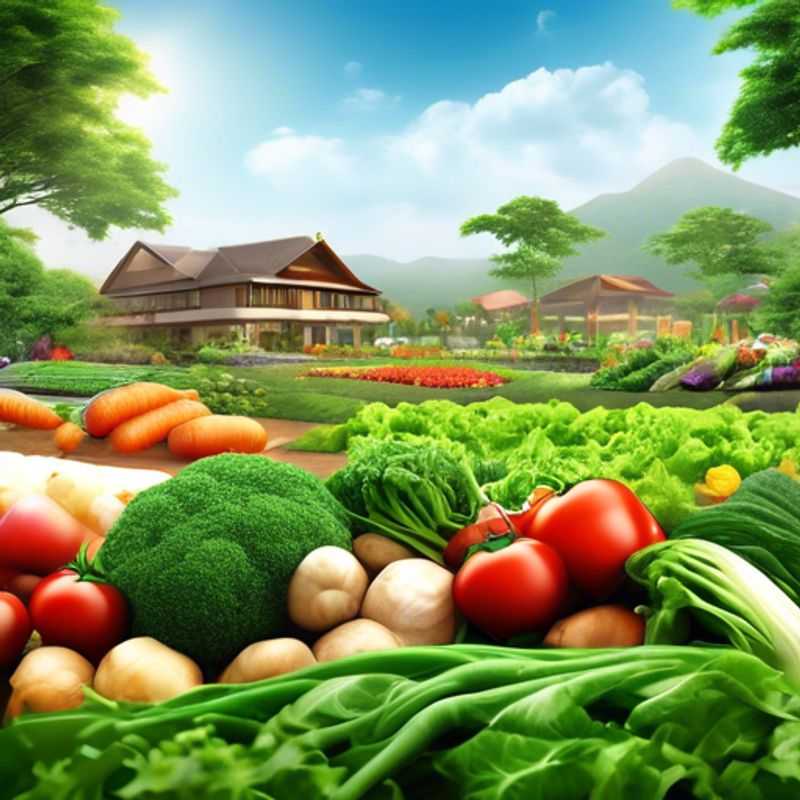Top 3 Things to Know Before Buying the Best Fertilizer for Vegetables

Unlocking the Secrets of Fertilizer Success: 3 Essential Things to Know Before Buying
Ah, the age-old question: how to get your vegetable garden thriving? It all starts with understanding the fuel that powers their growth - fertilizer! And just like a finely tuned engine, your veggies need the right blend of nutrients to perform at their best. So, before you head to the garden center, let's dive into the top three things you need to know about choosing the best fertilizer.
1. Nutrient Composition: The Fuel That Drives Growth
Think of fertilizer as a nutrient cocktail for your plants. Each formula is a unique blend of nitrogen (N), phosphorus (P), and potassium (K) - the big three. Nitrogen encourages lush foliage, phosphorus promotes strong roots and flower development, and potassium strengthens overall plant health and disease resistance. But here's the trick: different vegetables have different appetites! Leafy greens crave more nitrogen, while root vegetables benefit from a higher phosphorus content. Understanding your vegetables' specific needs is crucial for choosing a fertilizer that will give them the edge they need to thrive.
2. Application Method & Timing: Delivering Nutrients When They Matter
Now, let's talk delivery. How you apply fertilizer can significantly impact its effectiveness. Granular fertilizers are easy to sprinkle around, while liquid options can be directly applied to the soil or even sprayed on foliage. Each method has its advantages, and the best choice will depend on your garden setup and the type of fertilizer you've chosen. But there's another crucial element: timing. Applying fertilizer when your plants are actively growing is key to maximizing nutrient absorption.

Decoding Fertilizer: Matching Nutrients to Your Vegetable Needs
Understanding the nutrient composition of a fertilizer and how it aligns with the specific needs of your vegetable plants is crucial for maximizing growth and yield. Fertilizers are typically labeled with three numbers, representing the percentage by weight of nitrogen (N), phosphorus (P), and potassium (K), often referred to as the N-P-K ratio.
Nitrogen is essential for leaf growth, and a deficiency can lead to stunted growth and pale green foliage. Phosphorus is crucial for root development and flowering, while potassium promotes overall plant vigor and disease resistance.
Different vegetables have varying nutrient requirements. For example, leafy greens like lettuce and spinach need high nitrogen levels, while root vegetables like carrots require more phosphorus. Tomatoes and peppers have high potassium needs.
Choosing a fertilizer with an N-P-K ratio that matches the specific needs of your vegetable plants is important. For instance, a fertilizer with a higher nitrogen percentage may be suitable for leafy greens, while a fertilizer with a higher phosphorus percentage would be more beneficial for root vegetables.
Always follow the label instructions for application rates and timing, as too much fertilizer can harm your plants. Consider using a slow-release fertilizer to provide a steady supply of nutrients over a longer period.
Soil testing can help determine the specific nutrient levels in your garden soil and guide your fertilizer choices. You can contact your local agricultural extension service for information on soil testing and recommendations for appropriate fertilizer types.

Nutrient Timing and Application Methods: Maximizing Plant Health
Understanding how and when to apply nutrients is crucial for healthy plant growth. The right application method and timing can significantly impact nutrient uptake and overall plant health. Here's a summary guide to help you optimize nutrient absorption:
Application Methods:
Different application methods are available, each with its own advantages and disadvantages. Some common methods include:
- Foliar Application: Applying nutrients directly to the leaves allows for faster absorption, especially for micronutrients. However, this method may not be suitable for all nutrients and can be more expensive.
- Soil Application: This is the most common method, involving applying nutrients to the soil around the plant. It is generally cost-effective but may take longer for the nutrients to reach the roots.
- Fertigation: Involves applying nutrients through the irrigation system. This method is efficient and can be precisely controlled.
- Root Drenching: Applying nutrients directly to the root zone, often used for seedlings or transplanting.
Timing Considerations:
The timing of nutrient application is equally important:
- During Active Growth: Applying nutrients when plants are actively growing ensures they can utilize them effectively. This is typically during the spring and summer months.
- Before Planting: Pre-plant fertilization can improve soil fertility and provide initial nutrients for seedlings.
- After Harvest: Applying nutrients after harvest can replenish soil nutrients and prepare for the next growing season.
Additional Tips:
- Soil Testing: A soil test can identify nutrient deficiencies and help you determine the optimal nutrient application plan.
- Plant Specific Needs: Different plants have different nutrient requirements. Research your specific plant's needs for accurate application.
- Avoid Over-Fertilization: Excessive nutrient application can damage plant roots and lead to nutrient imbalances. Always follow recommended application rates.
Remember, this is a concise guide. For detailed information on specific nutrient application methods and timing for your plants, consult with agricultural experts or reputable online resources.

Choosing the Right Fertilizer: A Deep Dive into Organic, Synthetic, Slow-Release, and Environmental Impact
When considering the use of fertilizers or soil amendments, it's essential to evaluate several key factors: organic vs. synthetic, slow-release vs. fast-acting, and potential environmental impact.
Organic fertilizers are derived from natural sources, promoting soil health and biodiversity. They release nutrients slowly, enhancing soil structure and microbial activity. In contrast, synthetic fertilizers provide immediate nutrient availability but can lead to soil degradation and waterway pollution if mismanaged.
The choice between slow-release and fast-acting formulations significantly impacts nutrient delivery. Slow-release fertilizers gradually supply nutrients, reducing the risk of leaching and providing a steady nutrient supply over time. Fast-acting options, however, are beneficial for quick nutrient boosts but require careful application to prevent nutrient runoff.
Furthermore, the environmental impact of fertilizers cannot be overlooked. Organic options tend to have a lower carbon footprint and promote sustainable practices, while synthetic fertilizers can contribute to greenhouse gas emissions and water contamination. Understanding these implications is crucial for making informed choices.
In planning, consider any associated costs such as purchasing, application, and potential remediation of environmental impacts. Investing in organic or slow-release options may have higher upfront costs but can provide long-term benefits for both soil health and environmental sustainability.
